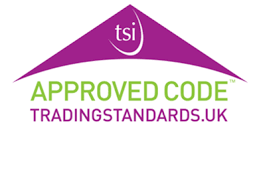St Andrews: 01334 850382
Glenrothes: 01592 654553
Email: info@rbgrant.co.uk
St Andrews: 01334 850382
Glenrothes: 01592 654553
Email: info@rbgrant.co.uk
Serving Scotland
,You can make a huge step towards electrical energy independence using solar pv storage batteries. Solar battery storage systems let you store up electrical power for when you really need it. You can charge from Solar Panels or from the grid. We provide a free survey and design service for electrical battery storage devices contact us today. These systems can reduce export to the grid allowing you to use more of your generated electricity and reduce your electricity bill. We are currently using Tesla Powerwall, GivEnergy, Ecoflow Fox, PowerOcean , Growatt and Solax battery systems.
Adding battery storage minimises your reliance on the grid, and reduces your electricity bills. But a battery storage system is not for everyone. Below is some guidance on the systems supplied from the BRE.
Batteries designed to capture surplus electricity generated by your solar PV system allow you to store solar electricity for use later in the day. A battery can also charge on cheap energy during the night. This guide sets out the main features you might need to take into account when deciding if a battery storage system is suitable for you and your solar PV system. Included are 20 questions to ask your installer should you consider a battery system. Potentially batteries can help you use more of the electricity generated by your PV system, saving you money on your electricity bill. But they’re not for everyone, as you generally need to be generating ‘surplus’ solar electricity to store. It is also important to note that, contrary to expectations, some battery storage systems are not designed to work during power-cuts. In addition they are not cheap: at today’s prices, poorly designed systems may not repay their initial investment (in what they save on electricity bills). But prices continue to fall and the technology is also improving, meaning that battery storage is becoming a viable economic option for some households and businesses.
The solar PV system on your roof will generate electricity during the day that you can use in your home. Without a means of storing that solar electricity, any surplus energy that you don’t use is ‘exported’ to the local electricity grid. During times when the panels are no longer generating (or not generating enough for your needs), you need to buy electricity from your electricity supplier.
Energy storage’ lets you store the surplus solar electricity, instead of exporting it. Battery storage lets you use more of your solar PV system’s output (in the jargon, it ‘increases ‘self-consumption’). This reduces the amount of grid electricity you need to buy, saving you money on your electricity bill. During the day : • the solar PV system generates solar electricity • the battery storage system will check if all the generation is being used to power your lights and appliances • if you’re not using all the electricity that the solar PV system is generating, then the system will ensure that any surplus energy is used to charge the battery • once the battery is fully charged, if there is still more solar electricity being generated, this will be exported to the grid (or in some systems, will be diverted to other uses e.g. to an immersion heater) In the evening or at time of low solar generation: • the solar PV panels have a reduced or zero output • the battery system can discharge the stored electricity, providing you with renewable-generated electricity at no additional cost • once the storage battery is discharged, if you need to use more electricity, you buy it from your electricity supplier
We use several manufacturers including Tesla Powerwall, Sonnen , LG , Enphase, Solis, Givenergy, Pylon, Puredrive, Sunsynkj, Fogstar, Solax and Growatt.
The two types of batteries most commonly offered for solar PV storage in the home are lithium-ion and lead-acid batteries. Some of their key features and differences are set out here: Batteries and battery systems can vary considerably in shape, size and weight. The greater the battery capacity, the greater the battery size and weight. Typical domestic systems vary from being the size of a small computer to the size of a washing machine. 3.2 Battery capacity Battery storage systems are often provided with a power rating in kiloWatts (kW). Storage batteries for a grid connected solar PV storage system are typically around 1kW to 7kW. This is the capability of the battery to provide power. A battery’s stated electricity capacity, as expressed in kilowatt-hours (kWh)1 is generally larger than the battery’s actual useable capacity, because: • all batteries lose some energy in charging and discharging, though some have better ‘charge-discharge efficiency’ than others. • most batteries are not designed to be routinely fully discharged (can reduce battery life). Some have deeper discharge capability than others. Typical Lead-acid battery systems may be setup to limit the ‘depth of discharge’ to around 50%, Lithium-ion systems to 75% or more. 3.
Storage for solar PV systems: the batteries Guidance for domestic and small commercial consumers
Lithium-ion batteries (commonly found in electronic devices such as laptops and mobile phones) • More expensive • Increasingly common in domestic grid-connected solar PV storage systems • Lighter • Require integrated controller, that manages charge / discharge • More efficient • Can discharge more stored energy • Longer expected lifetime
Lead-acid batteries (used in cars) • Cheaper • Typically used for off-grid properties where more storage is required • Heavier and larger • Need good charging and discharging routine to maintain battery health • Less efficient • Shorter expected lifetime
Battery storage systems are often provided with a power rating in kiloWatts (kW). Storage batteries for a grid connected solar PV storage system are typically around 1kW to 10kW. This is the capability of the battery to provide power. A battery’s stated electricity capacity, as expressed in kilowatt-hours (kWh)1 is generally larger than the battery’s actual useable capacity, because: • all batteries lose some energy in charging and discharging, though some have better ‘charge-discharge efficiency’ than others. • most batteries are not designed to be routinely fully discharged (can reduce battery life). Some have deeper discharge capability than others. Typical Lead-acid battery systems may be setup to limit the ‘depth of discharge’ to around 50%, Lithium-ion systems to 75% or more
A fully-charged medium-sized system could store sufficient energy to power during the evening your lights and lower-powered items like your fridge-freezer, TV and laptop. Over four or five hours, all of these together will use at most a few “units” or kiloWatt-hours (kWh), of electricity. However, the battery will quickly run out if you put on heavy energy users like the washing-machine or tumble-dryer: these can consume 2 – 3kWh in a single use. And in winter, the battery might not store enough to provide for even the lower-powered items for many hours
A battery’s efficient lifetime depends on the technology and the way the battery is used – significantly on the number of ‘cycles’ (complete full battery charge and discharge) that they undergo. Manufacturers generally give an expected lifetime in years and/or in ‘charge-discharge cycles’. For example: • ‘Life expectancy = 10 years or 10,000 cycles, whichever is the sooner’ Lithium-ion batteries last longer than lead-acid: you may see a 10-year lifetime expectancy claimed and this is improving all the time. Normally the battery storage system will monitor the battery performance and should give you an indication when your batteries need replacing. Some battery system manufacturers operate a battery leasing and/or replacement scheme for worn-out batteries and arrange for the safe disposal/recycling of the battery.
As with many electrical products, a warranty for a battery is normally for a shorter period than its lifetime expectancy: for example a 5 year warranty on a battery expected to last 10 years. If you install a battery storage system you must notify your provider of your building and contents insurance as they will need to know.
There are two main ways of linking a battery storage system into such a system: • DC Coupled: the batteries are installed on the same side of the solar inverter as the solar PV panels, they charge from the panels, and their DC is only converted to AC when it’s used (‘DC-coupled’) OR • AC Coupled: the batteries are installed on the grid-side, where the solar PV’s DC has already been converted to AC (‘AC-coupled’). A separate inverter converts the AC back to DC for storing in the battery. When the battery discharges, the same separate inverter converts the DC back to AC.
Despite expectations, some storage systems will not provide power during a power-cut.
You can weigh up the substantial costs of the battery storage system against the potential benefits. In purely financial terms, you can compare the cost of the battery system with your estimated benefit in savings. On the cost side, you need to take into account: • the full cost of the system, including any running costs • the cost of replacing the battery at least once in the lifetime of your PV panels. On the benefits side, every kWh you use from the battery is a kWh you don’t have to import from the grid and pay your electricity supplier for. How much YOU will save over the course of a year depends on your circumstances, including: your solar PV system, your ‘load profile’, the battery concerned, your electricity tariff per kWh. In working out savings, remember to factor in: • The cost of any mains-charging • Whether your FIT generation or export tariffs are affected • The savings won’t be the same in the winter months as in the summer. Comparing total costs with net benefits per year will show you how many years it would take for the system to ‘pay for itself’ or ‘payback’. This is an approximate calculation only. It assumes a constant level of annual benefit over the years and does not take into account any inflation, or changes in usage, electricity prices or export tariffs.
Many electrical providers now offer cheap electricity rates during the night. You can charge your battery with the cheap rate tariff and use during the day.
The Energy Saving Trust offer free and impartial advise
Please find our guide on question you should consider before buying a solar storage battery










